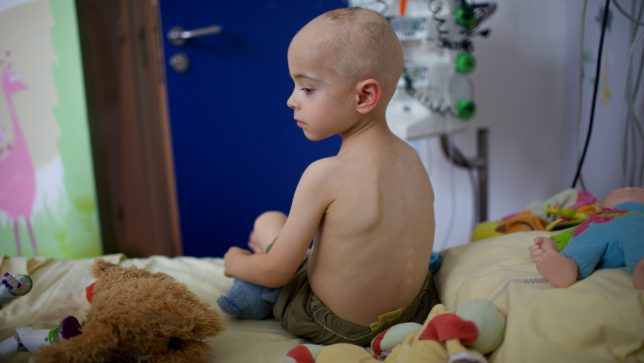A 34% increase in childhood cancers since 1975 has led a group of scientists, health professionals, businesses, and advocates to ignite a call to action to highlight preventable environmental factors that threaten our children. This coalition seeks to establish a National Childhood Cancer Prevention Research Agenda and National Childhood Cancer Prevention Plan to eradicate non-hereditary Childhood Cancers through a dramatic reduction of toxic chemicals with a strong “all hands-on deck” cross-sector approach to childhood cancer prevention.

The group’s report released last week, “Childhood Cancer: Cross-Sector Strategies for Prevention,” includes contributions from American Sustainable Business Council, Cancer Free Economy Network, Children’s Environmental Health Network, Clean and Healthy New York, Clean Production Action, UMass Lowell Center for Sustainable Production, Max Cure Foundation and Made Safe. The report calls for a cross-sector approach to reduce use and emissions of toxic chemicals at a time when rates of new cancers in children are climbing.
Based on a comprehensive review of the science, the report finds sufficient evidence to warrant preventative actions for a number of risk factors in the environment to which children are exposed, including traffic-related pollution, pesticides and solvents.
“When I think of what my life was like growing up versus what it is now, the differences are very striking. We didn’t have an exterminator we didn’t have herbicides for use in the garden. We didn’t have non-stick pans or plastics enveloping all of our food products. Infants do not smoke, drink alcohol or have stressful jobs. Is the rise in children’s cancers related to the ocean of chemicals in which we now live?” stated Dr. Margaret Kripke, Professor Emerita University of Texas – MD Anderson and former Panelist of the President’s Cancer Panel.
“Our children are exposed in the womb and face unique environmental exposures at home, in their learning environments, and in their communities. These must be addressed by changing business practices and making courageous public policy decisions to promote healthy environments, based on the best available evidence,” added Nsedu Obot Witherspoon, MPH, Children’s Environmental Health Network.
Parents are often unaware of children’s exposure to toxic chemicals where they live, go to school and play. With new knowledge, they can make choices to protect their children, but many exposures are beyond an individual’s control. Businesses and governments have a responsibility–and opportunity–to accelerate the reduction in the use of toxic chemicals, to give families the best chance at a cancer-free future, sparing their children severe chemotherapy treatments, originally intended for adult use. It’s time to take preventative measures to reduce the number of children diagnosed with the disease each year.
“This initiative to shift to safer chemicals and processes that protect rather than harm our environment, people and especially children, should be seen as a great opportunity for businesses. Many companies are already providing safe and healthy products and services that consumers, especially parents, are increasingly coming to trust and rely on, meaning there is a growing market. This initiative also calls upon policy makers to fund essential research, regulate toxic chemicals and incentivize the production and use of safer chemicals,” concluded David Levine, President, American Sustainable Business Council.
With the publication of this report the Childhood Cancer Prevention Initiative was launched, which will utilize these findings to engage businesses, advocacy groups, elected officials, and the scientific community to cooperate in this multi-sector effort to remove dangerous chemicals from our children’s lives.
The Childhood Cancer Prevention Initiative is a collaborative effort to improve children’s health by widely sharing the evidence base about the impacts of toxic chemicals on children, as well as opportunities for preventing childhood cancer by removing toxic chemicals from products and environments where children live, learn and play. Together, we will engage scientists and health professionals to review and interpret research; help manufacturers and retailers drive a shift in business practices; and encourage elected officials to implement responsible state and federal policies. We will learn from the experiences of parents, workers, businesses and communities, and provide them with information and tools to avoid exposure to potentially dangerous substances and exercise their power to shift the marketplace.


















